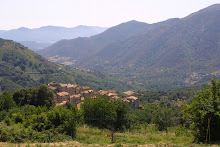The Old city area viewed from the sky

samedi 23 mai 2009
Shanghai Maps: Secrets, lies, and urban icons
Maps are an essential tool for the study of cities. Yet, as a wealth of studies have demonstrated, maps are not straightforward and genuine renditions of reality. They are documents produced for a purpose by a wide range social, economic and political actors with their own agendas. The new essay on Virtual Shanghai [see Texts -> Essays] presents a study of maps and map-making after 1949. "Shanghai in post-1949 maps: Secrets, Lies and Urban Icons" argues that political considerations and tight control on map-making led to the production of increasingly sanitized maps in addition to a clear distortion of the physical space represented therein. Would the study of other cities in China reveal similar patterns? Were the authorities in the former Soviet Union and its allied countries also involved in such misrepresentations of space and control over map-making? The second part of the paper examines map covers in their use to represent the city through buildings or places deemed to best embody the city. Icons changed over time, with the Huangpu River ad its banks as the most consistent symbol of Shanghai.
Inscription à :
Publier les commentaires (Atom)

Aucun commentaire:
Enregistrer un commentaire